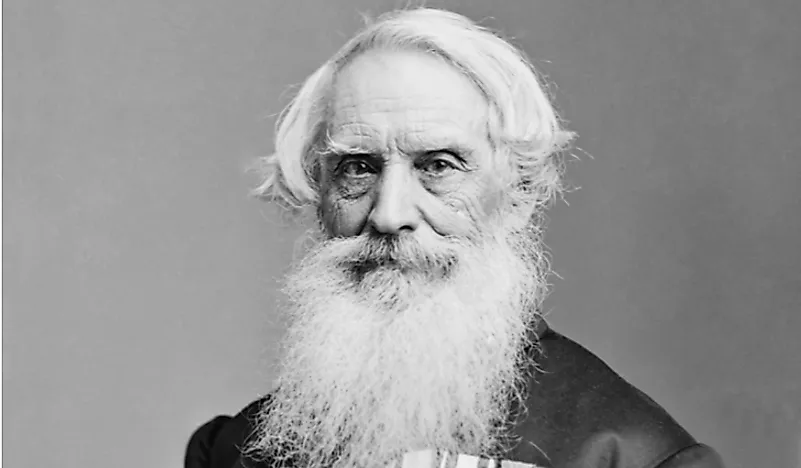Who Was Samuel Morse and What Did He Invent?

Samuel Morse was American inventor and painter. Following an established reputation as a portrait painter, Morse started working on his greatest invention - the single-wire telegraph structure based on telegraphs in Europe during his middle age. Morse helped co-develop the Morse code and greatly helped in the development of the commercial use of telegraphs as well.
5. Early Life
Samuel Finley Breese Morse was born on April 27th, 1791 in Charlestown, Massachusetts. Morse was the first born child of Jedidiah Morse a pastor and geographer and Elizabeth Ann Finley Breese. Jedidiah Morse was an astounding preacher who practiced Calvinism and staunch supporters of the American Federalist party. Samuel Morse attended Phillips Academy located in Andover Massachusetts. Later on, he was admitted to Yale College where he studied mathematics, the science of horses and religious philosophy. While Morse was at Yale, he also attended lectures on electricity from professors Jeremiah Day and Benjamin Silliman. Morse, who was a member of the Brothers in Unity, supported himself by painting before graduating from Yale College in 1810 attaining Phi Beta Kappa honors.
4. Career
Since Morse showed interest in painting, he attracted the attention of Washington Allston, a notable artist who offered him a three-year stay in England to study painting and meet with Benjamin West, another painter. Through perseverance and keen guidance of Allston, Morse was admitted to the Royal Academy in late 1811. While he was at the Academy, Morse keenly observed the works of Raphael and Michelangelo. On August 21st, 1815, Morse left England and returned to the US to start a career as a full-time painter. The ten years after his departure from England marked an important era in Morse's artistic growth since he sought to capture the reality of life and the culture of America through his works. Throughout his career, Morse did numerous pieces and was commissioned to paint several prominent historical figures.
3. Major Contributions
Morse created the concept of a single wire telegraph, and later Morse code was developed becoming the world's primary language of telegraphy. Up-to-date the Morse code is still used for rhythmic data transmission. In 1958 Morse was given about $80,000 at that time as recognition by the governments of Russia, Belgium, Turkey, Sweden, Netherlands, Austria, Piedmont, Tuscany, and France each contributing as per the number of Morse instruments used in their respective countries. Morse also invented the machine for cutting marble which could carve marble or stone into 3D sculptors, but he could not patent it because a similar design existed.
2. Challenges
Morse faced some challenges in his lifetime, the greatest of which was the lack of proper recognition in his country until he was either old or after his death. Also during his time as an upcoming artist, one of the works in the Hall of Congress did not draw the desired crowd. Another challenge was the death of his wife who had suddenly died without his knowledge since there were no means of quick communication which prompted him to invent a long-distance means of communication. During his Morse code invention is was not easy for Morse to get investors or even government support until later.
1. Death and Legacy
On April 2nd, 1872, Samuel Morse died in New York City and was buried at Green-Wood Cemetery located in Brooklyn, New York. Morse helped establish the National Academy of Designs which is currently headquartered in Manhattan, New York City. He even served as the President of the Academy twice between 1826 to 1845 and 1861 to 1862. Morse is also remembered throughout history for his paintings.











